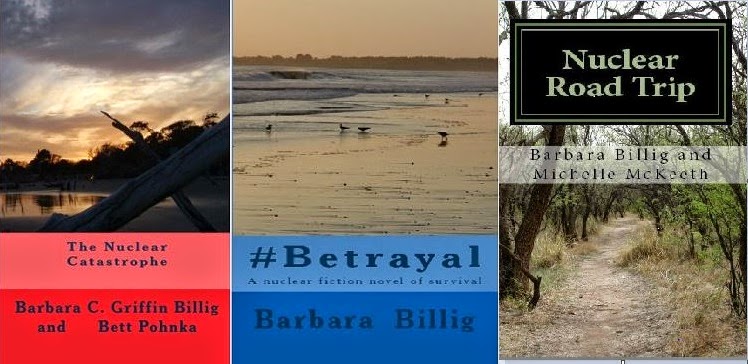Fukushima Risk Less Than Feared
By Sabrina Richards | May 24, 2012 in the NUTSHELL
Cancers due to radiation will not increase in Japan, according to studies conducted in the wake of the 2011 nuclear disaster.
The radiation emitted during the Fukushima nuclear accident is unlikely to lead to increases in cancer, according to two separate studies conducted by the World Health Organization (WHO) and the United Nations Scientific Committee on the Effects of Atomic Radiation (UNSCEAR). Based on estimates of radiation doses received after the accident, even cases of cancer in the nuclear plant workers highest exposed will be difficult to attribute to radiation, according to the reports on radiation exposures in the first year after the accident.
Both the WHO and UNSCEAR assessed public exposure. “If there’s a health risk, it’s with the highly exposed workers,” Wolfgang Weiss, UNSCEAR’ chair, told Nature. More than 150 nuclear plant workers received high enough exposures to slightly raise their risk of cancer, but most civilians did not, according to the WHO’s evaluation.
UNSCEAR’s report calculated that the Japanese government’s estimates of exposure were correct within a factor of ten, but surveys and interviews examining public attitudes show continuing distrust of official numbers. Residents are reporting high levels of PTSD symptoms, and some feel that reports on radiation exposure, though independent, may not be thorough enough. “I think international organizations should stop making hasty reports based on very short visits to Japan that don’t allow them to see what is happening
DANA POINT, Larry Hamlin: (Regarding) the usual anti-nuclear alarmism about radiation risks from the operation of the San Onofre nuclear plant [“San Onofre cancer study,” May 31]. The Environmental Protection Agency has estimated that the annual radiation dose received for populations within 50 miles of a nuclear power plant are more than 40,000 times less than that same population receives from natural background radiation.
Further, this nuclear power-plant-related EPA-estimated dose is more than 50 times less than a single dental X-ray, more than 200 times less than a single chest X-ray and more than 400 times less than a person receives in a one-way flight from Los Angeles to New York.
COMMENT: Every day we receive radiation from the sun. However, we do not have to be outside in that radiation. We can stay inside, wear protective clothes, etc. We do not breathe that radiation. Part of the radiation emitted from a nuclear power plant escapes with steam and the radioactive particles are attached and dispersed in a different manner than sunlight streaming down to earth. And it is possible to breathe these particles or have them drop on growing crops or water supplies to enter the food chain. Tuna off the coast of California as of August 2011 was found to have radioactive Cesium ten times higher than the prior year and that radioactive Cesium was linked to that produced in the Fukushima nuclear disaster. However, those amounts are still said to be so small that they will not hurt us. (Do you eat a lot of tuna?)
If we flew 200 round trips from New York to Los Angeles a year we would receive another ANNUAL dose of radiation equivalent to that from a nuclear power plant within a 50 mile range. Or had 50 dental films taken. Or had 200 chest x rays.
But do we want to have that extra annual dose of radiation from a nuclear power plant?
Opposing Views (and there are plenty besides these quoted):
Study #1:Nuclear power station causing cancer (www.timefor change.org)
An official study from the German government shows the risk of getting cancer is increasing for children growing up in the neighborhood of a nuclear power station. This is in particular true for leukemia, a special case of cancer.
Study #2:Leukemia death rates in U.S. children near nuclear reactors rose sharply (vs. the national trend) in the past two decades, according to a study that was published in the the European Journal of Cancer Care in 2009.
The greatest mortality increases occurred near the oldest nuclear plants, while declines were observed near plants that closed permanently in the 1980s and 1990s.
*******************
Knowing that coal power stations have their own risks does not make the risk from nuclear power stations any smaller. Renewable energy should be the way to go.
Germany now produces 50% of its energy from solar during mid-day hours. This is equivalent to 20 nuclear power plants operating at full capacity without any radioactive waste! LOOK – IT CAN BE DONE!
Don't forget – running nuclear power plants is big business and pays BIG BUCKS. No one involved in that industry wants to see it go – or be lessened.
But, make up your own mind. I have, and I don't want the risk.

First:"The Nuclear Catastrophe"-predicted what was to come. Then the actual Fukushima nuclear catastrophe validated terrible things actually can happen. A nuclear accident happened to occur in Japan–but could occur anywhere! "#Betrayal," shows the people deceived. Is the aftermath worse than the accident itself? Now..."Nuclear Road Trip". The terrorists want your country. They have a plan in place and have selected a city- they can far surpass 9/11.
Search This Blog
Monday, June 4, 2012
Make Up Your Own Mind - The Experts Have Different Opinions
Subscribe to:
Posts (Atom)